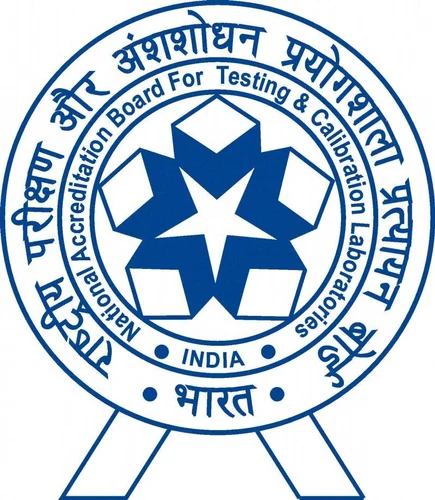Bengaluru

Select your city
Popular cites

Bengaluru

New Delhi

Pune

Mumbai

Chennai
Other cities
Hide All Cites
Add tests
CBC (Complete Blood Count)
Includes 16 Tests
You need to provide
Blood
This test is for
Male, Female
Overview of CBC (Complete Blood Count)
How CBC (Complete Blood Count) helps you?
A CBC (Complete Blood Count) test provides important information about the blood components, including red blood cells (RBCs), white blood cells (WBCs), and platelets. It is often used as a screening tool to assess overall health, detect various medical conditions, and monitor the effectiveness of treatments.
Precautions
1. Fasting isn’t required. You may eat and drink as per your daily routine.
2. It is advisable to stop multivitamins or dietary supplements containing biotin (vitamin B7) for at least 2 days before the test.
Package Tests Included in CBC (Complete Blood Count) (16 tests)
- RDW CV
An RDW CV test which is part of red cell indices, helps identify characteristics of red blood cells. RDW (red cell distribution width) measures the variations in the sizes of red blood cells, indicating how much they differ from each other in a blood sample. RDW is expressed as RDW-CV, a coefficient of variation. A higher RDW may suggest more variation in red cell sizes, while a lower RDW indicates more uniform red cell sizes.
- Hematocrit
A Hematocrit test measures the proportion of red blood cells (RBCs) in your blood as a percentage of the total blood volume. It is a crucial part of a complete blood count (CBC) and helps in assessing your blood health. RBCs are responsible for carrying oxygen from the lungs to different parts of the body. The hematocrit test provides valuable information about your blood`s oxygen-carrying capacity.
Higher-than-normal amounts of RBCs produced by the bone marrow can cause the hematocrit to increase, leading to increased blood density and slow blood flow. On the other hand, lower-than-normal hematocrit can be caused by low production of RBCs, reduced lifespan of RBCs in circulation, or excessive bleeding, leading to a reduced amount of oxygen being transported by RBCs. Monitoring your hematocrit levels is essential for diagnosing and managing various blood-related disorders.
- Total Leukocyte Count
A Total Leukocyte Count test measures the numbers of all types of leukocytes, namely neutrophil, lymphocyte, monocyte, eosinophil, and basophil, in your blood. Leukocytes or WBCs are an essential part of our immune system. These cells are produced in the bone marrow and defend the body against infections and diseases. Each type of WBC plays a unique role to protect against infections and is present in different numbers.
- Absolute Lymphocyte Count
An Absolute Lymphocyte Count test measures the total number of lymphocytes in the blood. Lymphocytes are a type of white blood cells that play an important role in your immune system and help your body fight disease and infection. There are two main types of lymphocytes:
-T lymphocytes (T cells): T cells control your body’s immune system response and directly attack and kill infected cells and tumor cells.
-B lymphocytes (B cells): B cells make antibodies. Antibodies are proteins that target viruses, bacteria, and other foreign pathogens.
Lymphocytes help your immune system remember every antigen (a foreign substance) it comes in contact with. After an encounter, some lymphocytes turn into memory cells. When these memory cells run into an antigen again, they recognize it and quickly respond. It is also the reason why getting vaccinated helps prevent certain diseases.
- Hb (Hemoglobin)
An Hb (Hemoglobin) test measures the concentration of hemoglobin protein in your blood. Hemoglobin is made up of iron and globulin proteins. It is an essential part of RBCs and is critical for oxygen transfer from the lungs to all body tissues. Most blood cells, including RBCs, are produced regularly in your bone marrow. The Hb test is a fundamental part of a complete blood count (CBC) and is used to monitor blood health, diagnose various blood disorders, and assess your response to treatments if needed.
- Absolute Neutrophil Count
An Absolute Neutrophil Count test measures the percentage of neutrophils per microliter of blood. Neutrophils are a type of WBC and play an integral part in the body`s immune system. They help fight off bacterial infections in the body by identifying and destroying foreign invaders, such as disease-causing microorganisms.
- Mean Corpuscular Hemoglobin
An MCH test measures the average amount of hemoglobin in a single red blood cell (RBC). Hemoglobin is an iron-containing protein in RBCs, and its major function is to transport oxygen from the lungs to all body parts. This test provides information about how much oxygen is being delivered to the body by a certain number of RBCs.
- Absolute Basophil Count
An Absolute Basophil Count test measures the total number of basophils in the blood. Basophils are small, spherically-shaped cells that originate from bone marrow and make up almost 1% of the total white blood cells in the body. They attack a foreign substance and release proteins like histamine and heparin to destroy harmful substances, such as allergens, pathogens, or parasites. Histamine helps widen the blood vessels and make space for more immune cells to come to the site of infection or injury, whereas heparin acts as a blood-thinning agent and helps to avoid blood clotting at that site.
- Differential Leukocyte Count
There are five types of WBCs: neutrophils, lymphocytes, monocytes, eosinophils, and basophils. A Differential Leukocyte Count test measures the percentage of each type of WBC in the blood. Leukocytes or WBCs are produced in the bone marrow and defend the body against infections and diseases. Each type of WBC plays a unique role to protect against infections and is present in different numbers.
This further contains
-Differential Basophil Count
-Differential Neutrophil Count
-Differential Lymphocyte Count
-Differential Monocyte Count
-Differential Eosinophil Count
- Red Blood Cell Count
A Red Blood Cell Count test measures the total number of red blood cells in your blood. RBCs are the most abundant cells in the blood with an average lifespan of 120 days. These cells are produced in the bone marrow and destroyed in the spleen or liver. Their primary function is to help carry oxygen from the lungs to different body parts. The normal range of RBC count can vary depending on age, gender, and the equipment and methods used for testing.
- Mean Corpuscular Volume
A Mean Corpuscular Volume test measures the average size of your red blood cells, which carry oxygen through your body. This test tells whether your RBCs are uniform or vary significantly in size.
- PDW
A PDW test reflects variability in platelet size, and is considered a marker of platelet function and activation (clot formation in case of an injury). This marker can give you additional information about your platelets and the cause of a high or low platelet count. Larger platelets are usually younger platelets that have been recently released from the bone marrow, while smaller platelets may be older and have been in circulation for a few days. Higher PDW values reflect a larger range of platelet size, which may result from increased activation, destruction and consumption of platelets.
- Mean Platelet Volume
An MPV test measures the average size of the platelets in your blood. Platelets are disk-shaped tiny cells originating from large cells known as megakaryocytes, which are found in the bone marrow. After the platelets are formed, they are released into the blood circulation. Their average life span is 7-10 days.
Platelets help stop bleeding whenever there is an injury or trauma to a tissue or blood vessel by adhering and accumulating at the injury site, and by releasing chemical compounds that stimulate the gathering of more platelets. After these steps, a loose platelet plug is formed at the site of injury, and this process is known as primary hemostasis. These activated platelets support the coagulation pathway that involves a series of steps including the sequential activation of clotting factors; this process is known as secondary hemostasis. After this, there is a formation of fibrin strands that form a mesh incorporated into and around the platelet plug. This mesh strengthens and stabilizes the blood clot so that it remains in place until the injury heals. After healing, other factors come into play and break the clot down so that it gets removed. In case the platelets are not sufficient in number or are not functioning properly, a stable clot might not form. These unstable clots can result in an increased risk of excessive bleeding.
- Absolute Eosinophil Count
An Absolute Eosinophil Count test measures the number of eosinophils in the blood and provides important information about the functioning of the immune system. Eosinophils originate from bone marrow and have a lifespan of 8-18 hours. These cells are involved in fighting certain types of infections and responding to allergic reactions in the body. The eosinophils have varied functions including the physiological role in organ formation, such as the development of post-gestational mammary glands. Other functions of these cells include movement to the inflammation areas, trapping substances, killing cells, and bactericidal and antiparasitic activities. They also help in the treatment of immediate allergic reactions and modulation of inflammatory responses. By measuring the number of eosinophils in the blood, this test provides important information about the functioning of the immune system.
- Platelet Count
A Platelet Count test measures the average number of platelets in the blood. Platelets are disk-shaped tiny cells originating from large cells known as megakaryocytes, which are found in the bone marrow. After the platelets are formed, they are released into the blood circulation. Their average life span is 7-10 days.
Platelets help stop the bleeding, whenever there is an injury or trauma to a tissue or blood vessel, by adhering and accumulating at the injury site and releasing chemical compounds that stimulate the gathering of more platelets. A loose platelet plug is formed at the site of injury and this process is known as primary hemostasis. These activated platelets support the coagulation pathway that involves a series of steps, including the sequential activation of clotting factors; this process is known as secondary hemostasis. After this step, there is a formation of fibrin strands that form a mesh incorporated into and around the platelet plug. This mesh strengthens and stabilizes the blood clot so that it remains in place until the injury heals. After healing, other factors come into play and break the clot down so that it gets removed. In case the platelets are not sufficient in number or not functioning properly, a stable clot might not form. These unstable clots can result in an increased risk of excessive bleeding.
- Absolute Monocyte Count
An Absolute Monocyte Count test measures the total number of monocytes in the blood. Monocytes are a type of WBC that originate from bone marrow and travel to different tissues via the blood. Once they are inside the tissue, these cells get converted to macrophages (a type of cell that digest harmful substances). Monocytes are the second line of defense mechanism of the human body after neutrophils. These cells are also responsible for the removal of injured or dead cells, microorganisms, and other insoluble particles from the blood.
